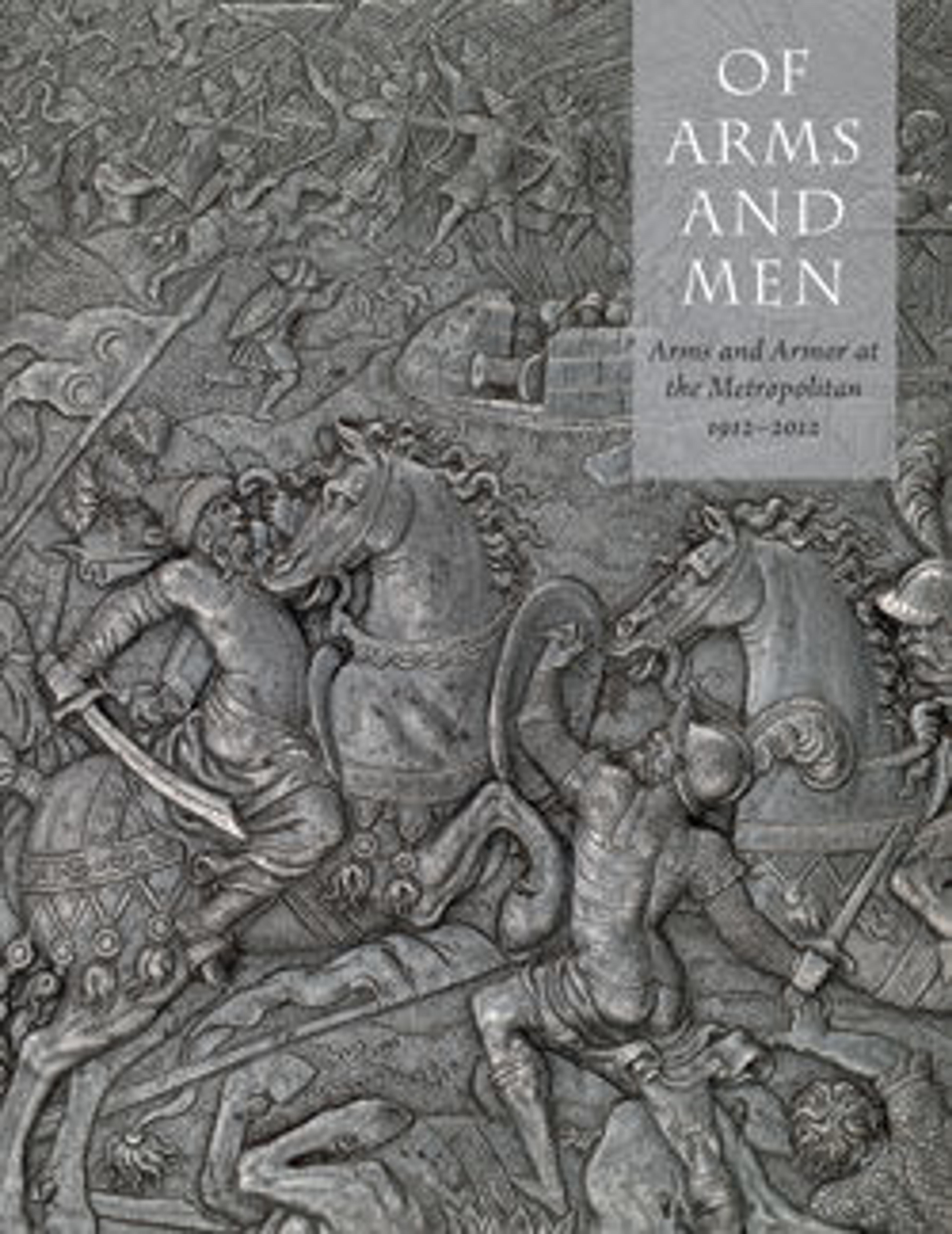Buffe
This buffe belongs to a burgonet also in the Metropolitan Museum's collection (acc. no. 04.3.217). The medallions on either side of the helmet bowl are embossed with scenes from Greek mythology depicting the Battle of Centaurs and Lapiths, a popular subject in Renaissance art. The compositions derive in part from design by Rosso Fiorentino (1494–1540), one of the Italian artists called to Fontainebleau to work for the French court.
Probably made for Henry II of France (reigned 1547–59), the helmet passed as a diplomatic gift to the Medici court in Florence later in the sixteenth century. It is illustrated in a portrait of Cosimo II de' Medici (1590–1621), grand duke of Tuscany, in the Metropolitan Museum's collection (acc. no. 22.150).
Probably made for Henry II of France (reigned 1547–59), the helmet passed as a diplomatic gift to the Medici court in Florence later in the sixteenth century. It is illustrated in a portrait of Cosimo II de' Medici (1590–1621), grand duke of Tuscany, in the Metropolitan Museum's collection (acc. no. 22.150).
Artwork Details
- Title: Buffe
- Date: ca. 1550
- Culture: French
- Medium: Steel, gold
- Dimensions: H. 8 7/8 in. (22.5 cm); W. 7 1/4 in. (18.4 cm); D. 4 3/4 in. (12.1 cm); Wt. without burgonet 1 lb. 2 oz. (499 g)
- Classification: Helmets Parts
- Credit Line: Purchase, Joseph Pulitzer Bequest, 1922
- Object Number: 22.140
- Curatorial Department: Arms and Armor
More Artwork
Research Resources
The Met provides unparalleled resources for research and welcomes an international community of students and scholars. The Met's Open Access API is where creators and researchers can connect to the The Met collection. Open Access data and public domain images are available for unrestricted commercial and noncommercial use without permission or fee.
To request images under copyright and other restrictions, please use this Image Request form.
Feedback
We continue to research and examine historical and cultural context for objects in The Met collection. If you have comments or questions about this object record, please complete and submit this form. The Museum looks forward to receiving your comments.
